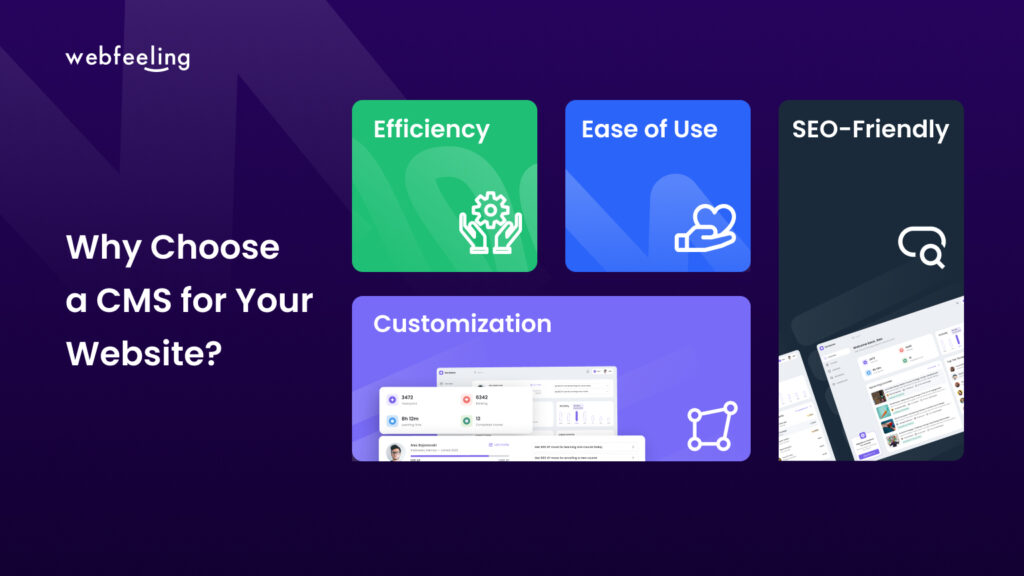If you’re a website owner or planning to launch a website, you’ve likely heard the term “Content Management System” or CMS. But what exactly is a CMS, and why is it essential for your online presence? In this article, we will guide you to CMS and see why it’s so important for running and looking after your website.

CMS platforms are designed to be user-friendly, making it accessible to individuals with varying technical skills. You can update your website's content, add new pages, or make design changes effortlessly.
With a CMS, you can streamline content creation and publication. It allows multiple team members to collaborate on content, making your workflow more efficient.
With a CMS, you can streamline content creation and publication. It allows multiple team members to collaborate on content, making your workflow more efficient.
CMS platforms often come with built-in SEO tools or support SEO plugins, helping you optimize your website for search engines and improve your online visibility.
With a CMS, you're in control. It's like having a user-friendly toolbox to craft and enhance your website, ensuring it remains current, engaging, and accessible.
Known for its flexibility and extensive plugin library, WordPress is a top choice for bloggers, small businesses, and even large enterprises.
It is a versatile CMS that offers a balance between ease of use and advanced features, making it suitable for various types of websites.
Robust CMS favoured by developers for its scalability and flexibility, making it ideal for complex, large-scale websites.
User-friendly website builder that simplifies the website creation process, making it accessible to beginners.
Whether you’re running a blog, an e-commerce site, or a corporate website, choosing the right CMS can help maintain an effective and engaging online presence that brings success to your business. Here are the essential steps to get started with a CMS:
Choose the Right CMS
Select a CMS platform that aligns with your website’s goals and your level of expertise.
From its user-friendly interface to the customizable features, a CMS streamlines the journey of building and managing your online presence. So, have you considered using CMS on your website?
Join our mailing list for design insights, case studies and tips directly in your mailbox.
How can I help you with your project?

Typically replies in a few minutes.
Prompt response: 9:00 – 17:00 (UTC +8)